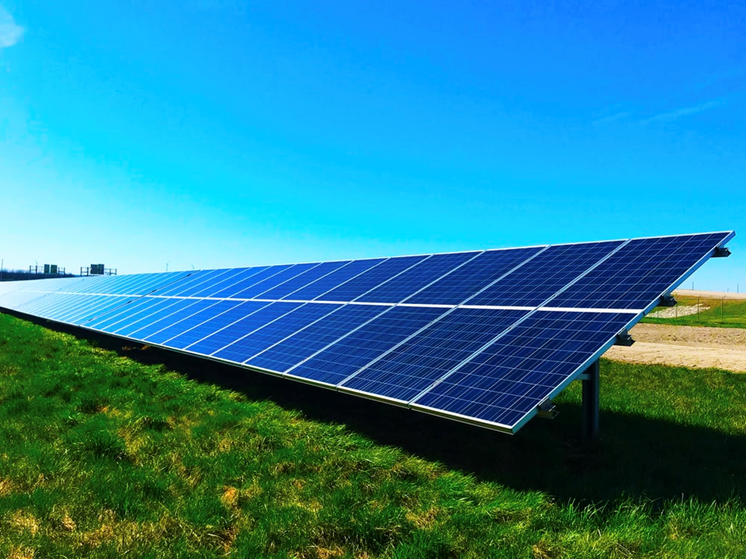The Transformative Power of Solar Energy for Global Prosperity
Written on
Introduction: The Quest for Energy
Just like the thrill of music and the allure of adventure, humanity's need for energy is insatiable.
With each new breakthrough, we unlock waves of economic growth that help lift countless individuals out of poverty. Unfortunately, many "experts" often overlook how fortunate we are to engage in discussions about energy sources, be it fossil fuels, nuclear, or renewables.
However, our current energy landscape has not always been so varied. We have evolved significantly from the days when dung was our primary fuel source. Tragically, billions of people still endure this reality. Many lack access to stable electricity and may even view rolling blackouts as a luxury, relying instead on burning wood or dried animal dung for cooking, heating, or lighting.
The advent of solar power holds the potential to spark another economic revolution, one that could integrate the remaining population into the modern world.
Before delving into what makes solar energy so revolutionary, it's essential to understand how the five main energy sources function today.
Hydroelectric Energy: Harnessing Gravity
Hydroelectric energy captures runoff from rain and snow in large bodies of water, whether natural lakes or strategically built reservoirs. This stored water represents "potential energy," which can be converted to kinetic energy as it flows downhill, turning turbines to generate electricity for the grid.
One of the remarkable aspects of hydroelectric energy is its flexibility; grid operators can quickly adjust electricity production by controlling water flow. This ability is crucial during peak demand, such as when everyone turns on their air conditioning or prepares dinner.
Wind Energy: The Power of Movement
By now, many have seen extensive wind farms dotting the landscape or positioned offshore. Their purpose is straightforward: to capture wind and convert its movement into electricity.
This wind energy originates from the uneven heating and cooling of the Earth's surface by the sun, causing air to move in patterns that vary in density. However, the unpredictability of wind patterns can pose challenges for grid operators who rely solely on this energy source.
While consumer demand fluctuates, wind supply can be inconsistent, making it challenging to provide a steady power supply.
Fossil Fuels: The Legacy of Organic Matter
Fossil fuels, formed from decomposed organic materials over millions of years, have become the backbone of modern energy. Their discovery in the late 1800s has significantly reduced poverty levels by providing affordable energy.
For electricity generation, coal and natural gas are primarily utilized. The combustion of these fuels powers turbines to generate electricity, operating similarly to other energy production methods discussed earlier.
Nuclear Energy: A Dense Source
Nuclear energy stands out for its efficiency; just one kilogram of Uranium 235 can power a home for over thirty years. By slightly enriching uranium, we can enhance the frequency of reactions, which are controlled by fuel rods to manage the process safely. The heat produced is then used to generate steam, spinning turbines to produce electricity.
Geothermal Energy: Tapping into Earth’s Heat
Geothermal energy harnesses natural heat from beneath the Earth's surface, often found near hot springs or volcanic regions, such as Iceland or Hawaii. This heat is used to generate steam, which then spins turbines to create electricity.
The Solar Revolution: A Game Changer
Solar energy is unique because it requires no moving parts for electricity generation.
Pioneering scientists discovered that sunlight, comprising both waves and particles, can interact with semiconducting materials like silicon. This interaction excites electrons, creating an electric current.
The introduction of solar technology has not only expanded our energy mix but could also bridge the gap for billions lacking reliable power. As solar panel costs continue to decline, the potential for scalable, modular systems becomes increasingly attainable.
This advancement will allow individuals with access to sunlight to establish their own mini power grids, providing limitless clean energy—something traditional power systems could never achieve.
So, as Bill Nye would say, NOW YOU KNOW!
Chapter 1: Energy Sources Explained

Section 1.1: Hydroelectric Energy
Hydroelectric energy is generated by using the gravitational force of falling or flowing water.
Section 1.2: Wind Energy
Wind energy captures the power of the wind to produce electricity through turbines.
Section 1.3: Fossil Fuels
Fossil fuels are energy-dense materials formed from decomposed organic matter.
Section 1.4: Nuclear Energy
Nuclear energy involves harnessing the heat produced from nuclear fission.
Section 1.5: Geothermal Energy
Geothermal energy taps into the Earth's internal heat to generate electricity.
Chapter 2: The Promise of Solar Power
Solar power stands out for its simplicity and potential.
The first video title is "Empire of the Sun: A Solar Power Revolution - YouTube" - This video discusses the impact of solar energy on global economies and its potential to transform energy access.
The second video title is "2473: Solar Revolution: Technology and Renewable Energy - YouTube" - This video explores advancements in solar technology and its role in the renewable energy landscape.